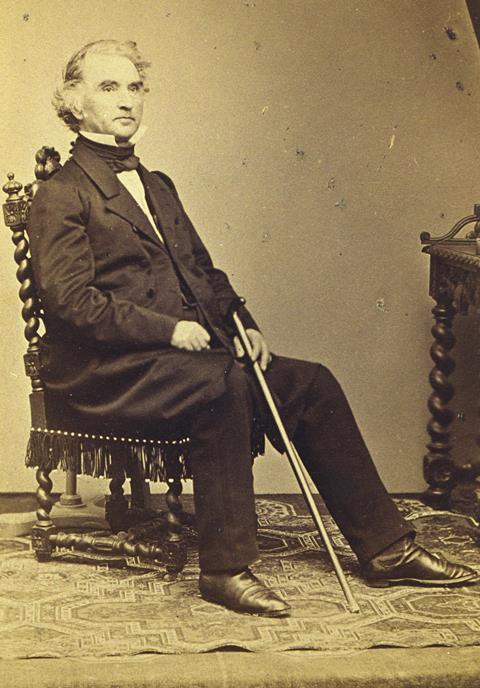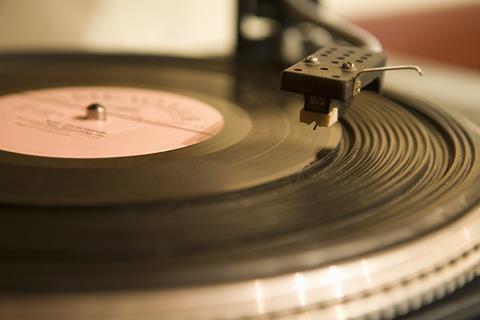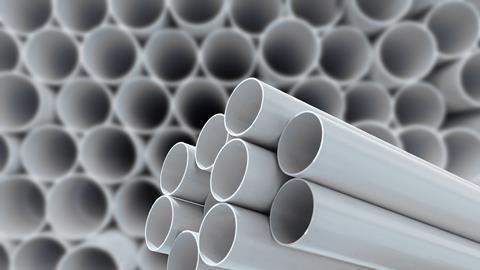Meera Senthilingam
This week, a long lasting compound which has been dividing opinion among the masses for many years. Revealing its chemistry is Brian Clegg…
Brian Clegg
Imagine a compound that is so effective that it means you can forget maintenance of items made from it from many years to come, that people in their millions make use of in their homes – and yet that others consider a design disaster. The same compound that some find sexy in clothing, while others believe it to be tasteless in the extreme. This uniquely socially divisive molecule is polyvinyl chloride, almost universally known as PVC.

Vinyl chloride or chloroethene, the monomer of which PVC is made, is a simple molecule: just a pair of double-bonded carbons, one attached to two hydrogen atoms, the other to a hydrogen and a chlorine. This toxic, carcinogenic and highly flammable liquid has little value in its own right. But open up the double bond and use it to chain many of the molecules together and the result is a particularly versatile polymer.
Although its practical use would come considerably later, PVC was one of the earliest plastics to be discovered – but without its discoverers realising. The versatile German pioneer of organic chemistry Justus von Liebig produced vinyl chloride in 1835 and that same year his student Henri Regnault left a container of the liquid in sunlight and found a white solid was deposited – but took it no further. When plastics started to become of interest there were a number of attempts to make use of PVC, but it proved brittle and difficult to manipulate.

It wasn’t until 1926 that Waldo Semon at the American rubber and chemicals company B. F. Goodrich discovered a way to make PVC less fragile and more practical by adding a plasticiser. These compounds, often esters of the aromatic phthalic acid, get embedded between the long chains of the PVC molecules, spacing them out and so making the material more flexible and useful for manufacturing. Other additives would be developed over time to make the finished product more stable when exposed to heat and ultraviolet light. Where most plastics are made entirely from oil, over half of PVC by weight (the chlorine) comes from salt, leaving the remainder as ethylene from gas, oil or sugar crops. This thermoplastic is usually produced in powder form before being melted and moulded into products.
Although plasticisers were the breakthrough that brought PVC to market, its most visible (and often most criticized) use today is unplasticised, a distinction that is emphasised by referring to the material as uPVC (in America it is simply called vinyl). Although uPVC has plenty of other additives to prevent deterioration and brittleness, this plasticiser-free form is the material used to make the window frames and doors of most modern houses, and the replacement windows so hated by traditionalists. What is harder to argue with is that a combination of long life and good insulating properties makes uPVC one of the best building products in terms of cost and lifecycle environmental impact.
But that is only the start for PVC. The American name for uPVC is a clue to another application that was very popular until the 1980s – vinyl records, still treasured by audio buffs, are simply black PVC. The colouring, adopted simply to make the records look more like the old shellac 78 discs, simply demonstrates another of PVC’s versatilities – it is easy to transform its appearance with a different hue.

Vinyl records may have disappeared from most homes, displaced by the CDs that are now themselves an endangered species, but you will find plenty more instances of PVC in everyday use. The most common application – significantly greater than uPVC in volume – is in the piping that carries our services underground, particularly for water and sewer pipes. A variant of PVC, chlorinated polyvinyl chloride, where some of the hydrogen atoms in the molecules are replaced with chlorine, is increasingly popular for some types of piping as it is more resistant to corrosion from hot water and is less easily damaged when flexed and crushed. Conventional PVC is also one of the common insulators for electrical cabling, and provides the main material in many low cost flooring solutions.
We have already seen that PVC has a controversial place in the clothing market as a kind of cheap (and some would say kinky) waterproof substitute for leather, but it also plays a more sedate role in the medical world, where it is used for tubing and containers for blood and other liquids.
Although PVC sounds like something of a miracle substance (if you aren’t too put off by the thought of uPVC windows and shiny plastic trousers), it does have its detractors. Of itself, the compound does not present environmental issues, but when burned in a waste incinerator may produce highly toxic dioxins (this is disputed in a number of studies, which suggest that PVC levels do not influence dioxin output). When relatively new, PVC can also release some of its additives in gaseous form, so is generally not recommended in highly confined spaces. But on the whole this is a robust, safe compound that forms a key manufacturing material.
There’s nothing in the chemistry of PVC that can tell us whether it looks cheap and nasty, or is a sensible (and sometimes sexy) design decision. But even its detractors must admit that this is a hugely versatile and robust material that in the right place is hard to beat.
Meera Senthilingam
So you just need to be sure to use it in the right place. Science writer Brian Clegg there, with the versatile chemistry of PVC. Next week, bees beware…
Phillip Broadwith
A parasitic mite called Varroa attacks bees, and also infects them with a variety of different viruses.
Bees placed in extensive areas of the same crop aren’t getting the varied diet that they need to stay healthy. And removing their honey and feeding them sugar-based supplements could be depriving them of micronutrients, leading to malnutrition.
Selective breeding of commercial honeybees has decreased genetic diversity, possibly making bees more susceptible to disease. And the US practice of moving hives over great distances, to pollinate different crops in different seasons, may help spread diseases more quickly.
Alongside all this, the finger of blame is pointed at insecticides.
Meera Senthilingam
And discover which insecticide is under the spotlight by joining Phillip Broadwith in next week’s Chemistry in its Element. Until then, than you for listening, I’m Meera Senthilingam.













No comments yet